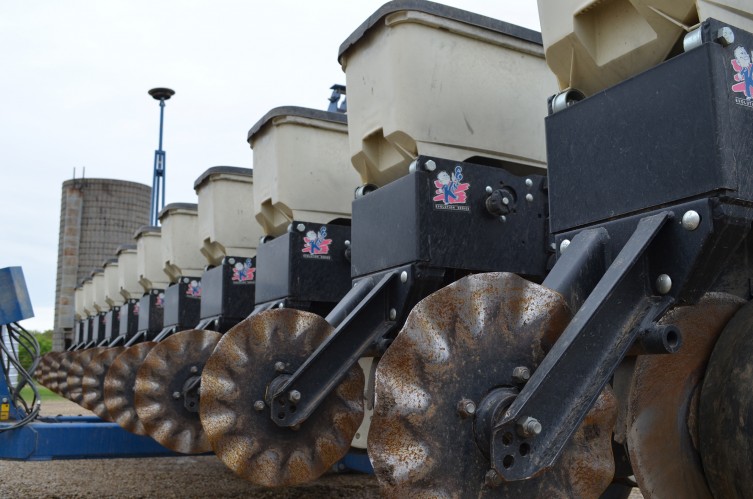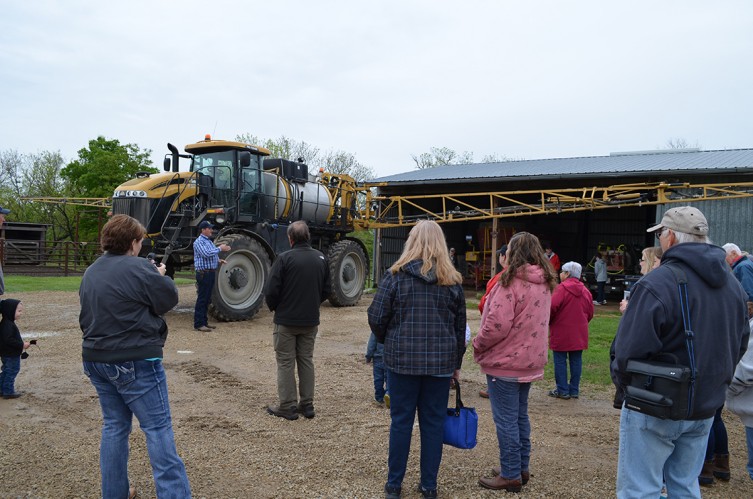Technology on the Farm: Spotlight on GPS
Heading out on vacation? You don’t wrestle with those 20th-century foldout maps anymore. You just plug your destination into your GPS or smartphone. Not only do you get an accurate ETA, but it can also flag food and gas stops along the way. Magic, right? Well, this same technology makes a big difference on farms.
“Across the board, GPS makes everything more efficient,” says Matt Perrier of Dalebanks Angus in Eureka.
To really appreciate what a difference it makes, consider the old-school way of doing things. (OK, well, not the old, old-school way, like horse-drawn plows, but you know what we mean.) When farmers drive tractors or other machines in the traditional way, they have to eyeball where to turn. In a car, making a turn can be really precise, of course. But in farm equipment, it can get tricky because the farmer might not be able to see the entire span of the attached gear. They could easily overlap rows or leave a gap. Plus, the fatigue from holding onto a massive, vibrating steering wheel for hours on end can turn even the nicest person into a bit of a grump.
With GPS, farmers can map their fields and manually program waypoints and other data, like areas where there are curves or where the shape of the field isn’t uniform. What the technology does from there is nothing short of amazing. GPS receivers installed on farm equipment like planters and sprayers can use that data to help navigate the fields. Better yet, some tractors and combines have auto-steering capability, so the farmer can oversee planting and harvesting without the physical fatigue.
GPS and auto-drive helps farmers:
- Save time. By reducing the amount of overlaps and gaps with a precise map, the GPS will cover the same acreage in less time.
- Save fuel. The more efficient navigation capabilities also mean less fuel gets used. Bonus!
- Reduce chemical use. In oddly shaped plots, sprayers can be individually programmed to turn on and off based on where they are in the field. So, if a farmer is driving down a non-uniform row, the sprayers won’t even lay down fertilizer, herbicide or pesticide in those spots.
Randy Small of 2S Land and Cattle in Neodesha said he’s seen a reduction in the amount of herbicide he uses thanks to this winning combination of technology!
Thanks to GPS, the environment, the wallet and the farmers all win.
 Diltz Lindamood explains how the GPS receiver (the white box on top of the tractor/planter) lets him auto-drive the equipment within a few inches accuracy.
Diltz Lindamood explains how the GPS receiver (the white box on top of the tractor/planter) lets him auto-drive the equipment within a few inches accuracy.
 This close up of the planters gives a glimpse at how precisely the machines manage seed distribution.
This close up of the planters gives a glimpse at how precisely the machines manage seed distribution.
Check out the width of this machine! When operating large equipment like the sprayer, GPS technology helps farmers stay the course while treating and cultivating their fields.
More About
- Interesting Facts: Stands for Global Positioning System
- Where You Can Find It: Your smartphone, On farming equipment
- Likes: Protecting the environment, Helping farmers operate more efficiently, Keeping farmers from being grumpy at the end of the day
- Dislikes: Wasting time, money, and resources

